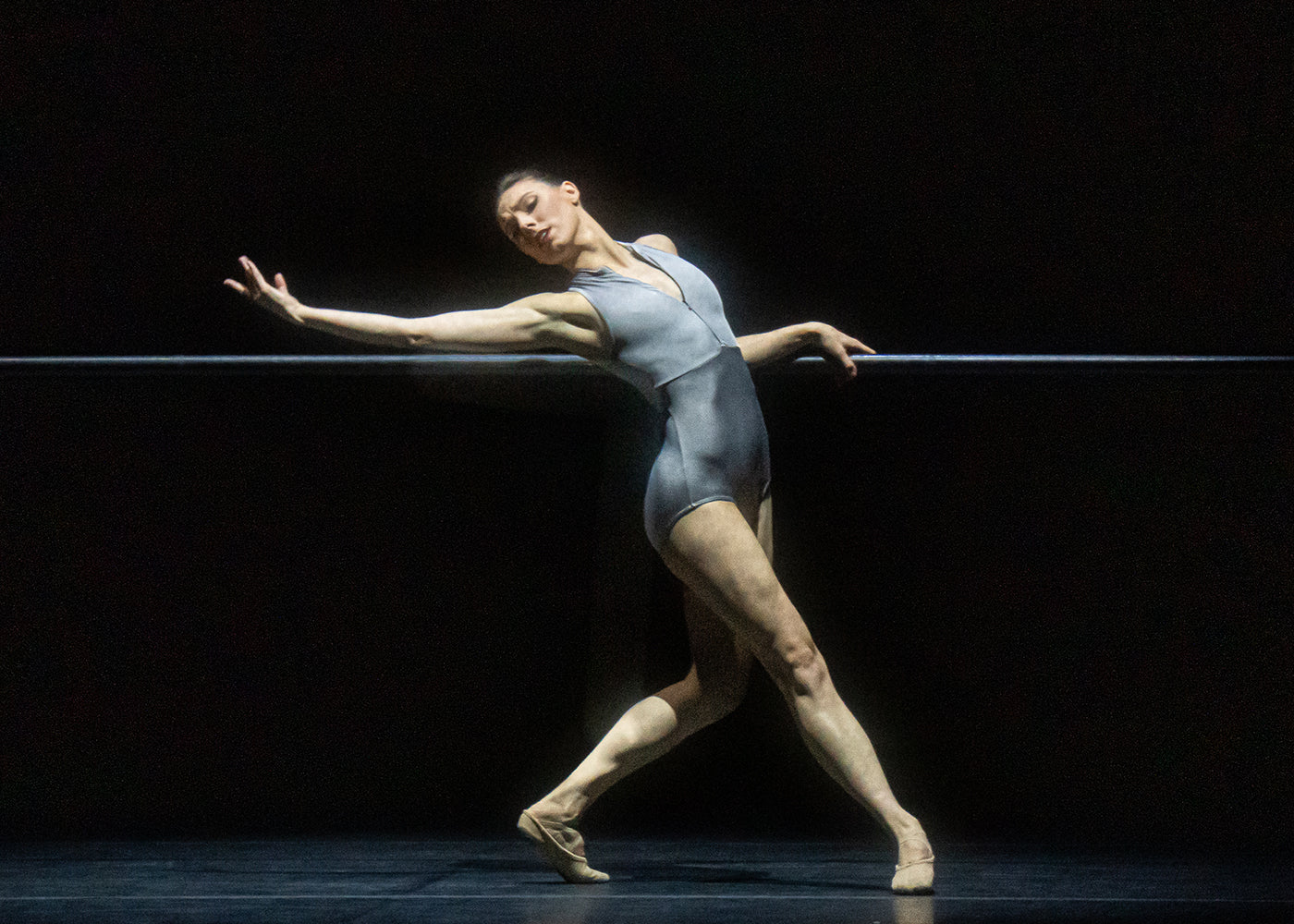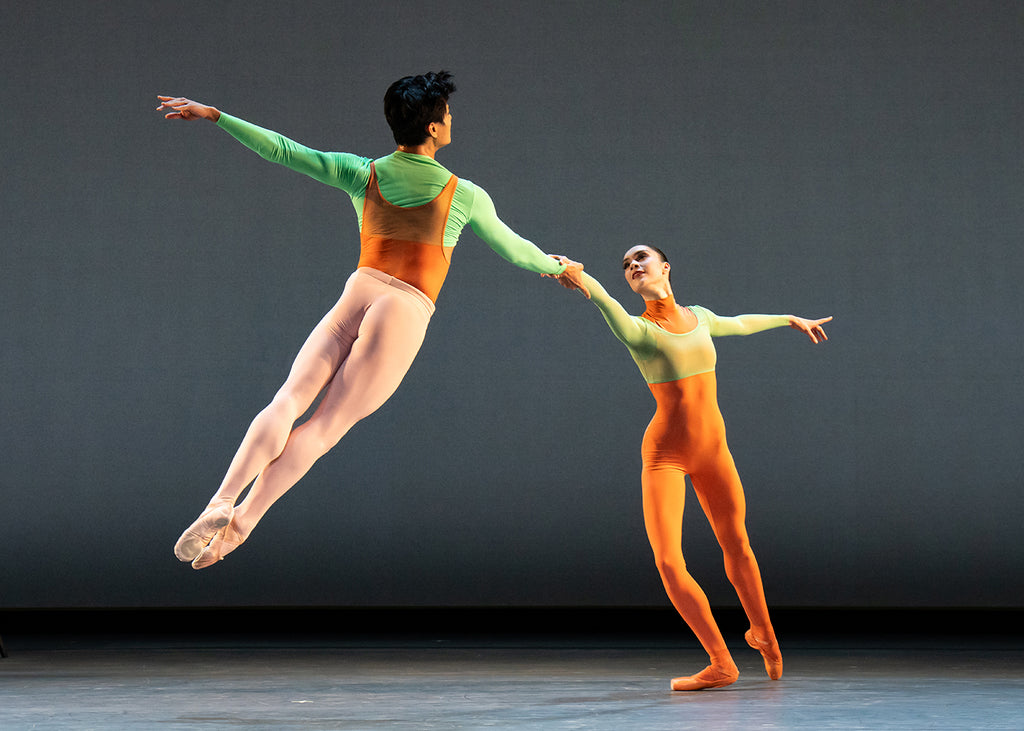Peck’s 2019 work, “Thousandth Orange,” set to a composition of the same name by Caroline Shaw, is a vibrant vision. A contemporary ballet for six dancers (performed by New York City Ballet’s India Bradley, Chun Wai Chan, Christopher Grant, Mira Nadon, Quinn Starner, and Ryan Tomash), “Thousandth Orange” is fluid and experimental, with smooth partnering sequences and thoughtful staging.
What’s most interesting about this ballet is the way it draws the dancers in to connect with one another, in couples, groups, or clusters. The piece begins with all six in a romantic pose—like deities or naiads in a Renaissance painting. They collapse into a sway, like a crop of seaweed underwater. This image bookends the piece, a Fokine-esque framework for a ballet that pans out like a dream. Some moments call to mind Lar Lubovitch’s 2024 “Many Angels,” which similarly experiments with melting port de bras and architectural group formations.
With their endless extensions, the City Ballet dancers seem to stretch to their fullest extent, but more often than not, they stay connected, in some way, to each other. That might look like a supported penché or even a grab of a foot in arabesque. Dance, here, is about relationships.
That’s also true of “Swift Arrow,” the 2021 Alonzo King piece created for, and performed by, Peck and Mejia. Set to an original piano composition by Jason Moran, the pas de deux brings the dancers into a dialogue. While Peck and Mejia display their typical technical prowess, the most crucial essence of this work is the emotion behind the steps. It’s a measured piece, which allows the quick-moving dancers to linger in their movements, and both seem to savor its more tempered pace. The work is not long, but it is tender: a relational ballet that sits in the same realm as Christopher Wheeldon’s “After the Rain.”











comments